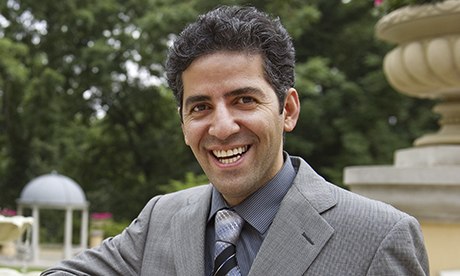
Iran's health minister, Hassan Hashemi, has expressed serious concerns over a dramatic rise in the number of people with HIV in the country, complaining that the current taboo prevents patients from receiving treatment.
"Today people in Iran are frightened of Aids because of misinformation and unscientific claims. This is why it remains a taboo," he said at an event in Tehran marking World Aids Day on Sunday, according to local media. "There has been a ninefold growth in the number of people with Aids in the past 11 years and an 80% increase each year."
He warned that the majority were unaware of their infections and that the trend was shifting from drug use to sexual transmission.
"This is more than the rate of our inflation or the rise in house prices," he said. According to Hashemi, social stigma means that HIV patients and their relatives keep the disease secret and ordinary people have little contact with those infected.
"Unfortunately, in our country, the status of awarness among patients, social support and education and prevention is poor," he said. "In Iran, the trend is shifting from transmission through drug addicts sharing syringes to transmission through high-risk sexual activities." About 5% of HIV patients in the country are child workers, the minister said.
In August, the newly elected president, Hassan Rouhani, appointed Hashemi, an ophthalmologist from Tehran University of Medican Sciences, as a cabinet member responsible for the health ministry. The move was hailed by doctors and experts.
Despite the minister's figures, Gary Lewis, the head of the UN office in the Islamic republic, said Iran was one of the countries in the Middle East with the most noteworthy Aids response. "Iran has taken important steps in the delivery and expansion of HIV/Aids services throughout the country during last couple of years," he told the Guardian.
"Between 2008 and 2012, the number of health facilities offering antiretroviral medicines in Iran rose from 86 to 290. That's almost a fourfold increase in four years. In addition, this year, over 3,500 people in need of antiretroviral therapy in Iran were receiving it – 10 times the number getting such treatment back in 2005." Iran's Aids treatment, including medicines and counselling, is provided totally free of charge.
Lewis added: "What still concerns us, however, is that the number of newly reported infections still outpaces the increase in the number of people receiving treatment."
Despite the sexual trend, Iran's effort is still concentrated among injecting drug users. "While IDU [injecting drug use] was responsible for two-thirds of infections a decade ago, today it accounts for only half. This means that a larger percentage of the transmission is taking place through the sexual route. And this means that the epidemic risks becoming more generalised," he said.
Lewis said Iranian authorities have considerably improved the situation regarding IDU through oral substitution therapy and needle-syringe programmes. The 2008 report on the global AIDS epidemic described Iran's needle-exchange programme as one of the "clear examples of courageous, visionary leadership in the response to HIV".
Under Rouhani's predecessor, Mahmoud Ahmadinejad, Iran's HIV treatment and prevention programmes experienced a series of setbacks with the authorities jailing two pioneering Aids doctors and preventing activists from publishing Aids awareness leaflets for students. Brothers Arash and Kamiar Alaei, whose work on HIV treatment won world recognition, were arrested in 2008 after participating in several international programmes held in the US, which Tehran considered its sworn enemy. They were eventually released after Arash Alaei spent three years in jail and Kamiar two and half years.
Speaking to the Guardian by phone, Kamiar Alaei, a Harvard University alumnus, said the number of patients visiting Aids clinics and seeking treatment dropped steadily under Ahmadinejad. "What makes me worried about Iran now is not its total numbers of people with Aids, but how many people are not aware of their infection," he told the Guardian. "Around 70% of people estimated to have HIV in Iran don't know they are infected. Compare that with the US, where the number of people with HIV is much higher than that of Iran, but 95% of people are aware of their infections."
Around 27,000 people in Iran are known by clinics to be living with Aids – but the real figure is estimated to be up to 100,000. Iran's health ministry has announced a new website set up for educational purposes.

